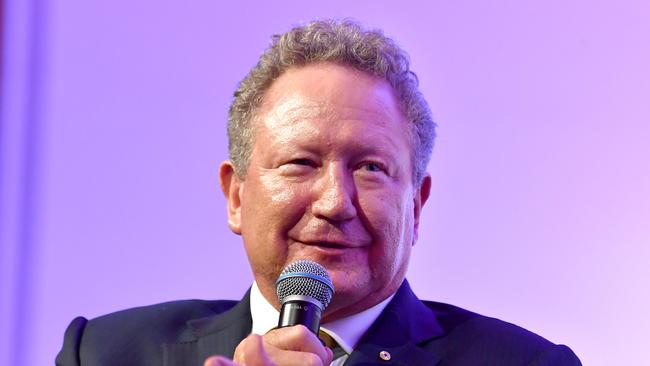Why Australia pivots on China, not the jobs summit
What happens to coal and iron ore prices through 2023 is far more significant to the nation and every single Australian than anything discussed at the PM’s big jobs summit this week.

Business
Don't miss out on the headlines from Business. Followed categories will be added to My News.
Fortescue has rounded off the mind-boggling 2021-22 numbers for the Pilbara iron ore majors, thereby posing the big, big, very immediate and pressing, question - what happens in 2022-23?
It’s not the big question only for the three majors and their shareholders individually – Fortescue and its big brothers Rio Tinto and BHP.
And in the case of course of Fortescue, one very specific individual: Andrew – formerly ‘Twiggy’, now ‘Green Hydrogen’ – Forrest.
As we note, he’ll be getting a $1.4bn – to stress, that’s with a ‘B’ - cheque in the (electronic) mail, making a total of $2.3bn for the year.
But it is indeed, even more the big question for the entire nation, in both direct and indirect economic terms, and very specifically for the budgets of the Commonwealth and of the ‘outlier’ state Western Australia.
In cold hard reality, the answer to the question – and the associated question, linked but also separated, of what happens to the coal price through 2023 – is far, far more significant to the nation and every single Australian, than any questions posed and/or answered at the prime minister’s big summit this week.
I did use the word ‘posed’ deliberately; there’s going to be a lot of posing from – now you might have thought I was going to write ‘poseurs’, but, wrong – from twerps over the two days.

In simple terms, the summit is about ‘talk, talk’ and spending someone’s money; the iron ore and coal prices are about the generation of the money to pay for that.
That is, to pay directly in terms of tax revenues, but also as an indicator of what’s happening in the global and local economies.
Iron ore and its price remains the absolutely key ‘canary in the coal mine’ about China.
If the price goes back to $US50, pretty much like the oil price going back there, be afraid, be very afraid; certainly, be much more afraid than if the Reserve Bank keeps putting up rates by 0.5 per cent at every meeting, as it will do next week.
The 2021-22 year was just a shade less super-spectacular than the 2020-21 financial year, when the big four miners pulled in just shy of $150bn in revenue.
This year (annualising the Rio numbers for its June half-year, as it balances at December) the big four iron ore revenues will be just shy of $US100bn $144bn).
As BHP detailed, it got $US113 a tonne as against $US131 in 2020-21. While Fortescue’s (not comparable) price dropped even more, from $US135 to $US100.
The pain in Aussie dollars was moderated because our dollar fell.
In 2020-21 it touched US80c and finished that year at US75.
In the latest year the Aussie peaked at US75c and finished just below US70c.
Just take a moment to think about how unexpectedly and bizarrely amazing those 2020-21 numbers were.
That year was the very peak – or depth – of Covid, when much of the world was locked down and the vaccines only started to dribble in the second half.
Yet it was easily the best year – taking account of both volumes and price – we’ve ever had for iron ore; and it was all, all, down to China, when China was recording its worst economic numbers since the time of Mao.
Is that sustainable?
Are iron ore prices and volumes, like Forrest’s Green Hydrogen Fantasies, all riding on a gi-normous bubble of, hot, air?
The WA budget shows most how important the answer is.
Over the 2020-21 and 2021-22 years WA expected to nearly $24bn from royalties, mostly from the ‘Pilbara Four’.
That’s nearly 29 per cent of WA’s entire revenue in the two years; bigger even than the $22bn from state taxes.
Hmm. If China’s stumble turns into ...
Originally published as Why Australia pivots on China, not the jobs summit



